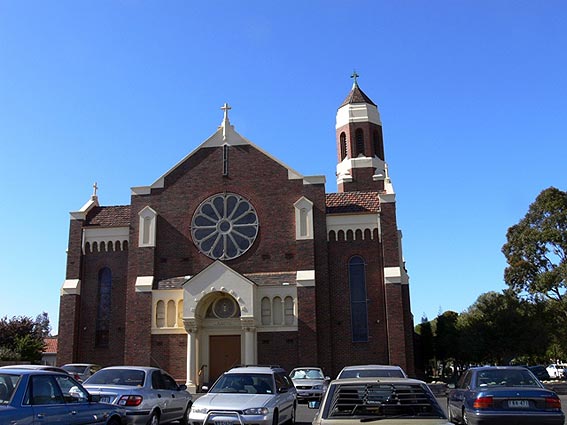
St Fidelis' Catholic Church, Moorland
[Photograph by John Maidment (2006)]

St Fidelis' Catholic Church, Moorland
[Photograph by John Maidment (2006)]
Historical and Technical Documentation by John Maidment © OHTA 20071
The foundation stone of St Fidelis' Church was laid in November 1937.2 Designed in the Romanesque style by the architects, Fritsch & Fritsch of Melbourne, the church was opened in October 1938.3
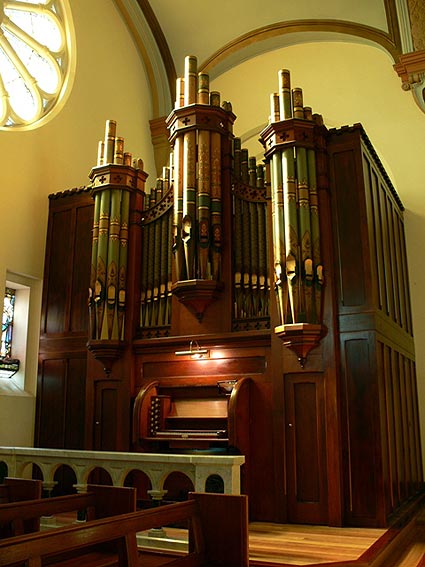
The 1891 Fincham & Hobday organ
[Photograph by John Maidment (2006)]
The organ was built by Fincham & Hobday for the Methodist Church, Mount Alexander Road, North Essendon at a cost of £295.00 and opened on 17 July 1891. The instrument was designed so that a second manual (Great Organ) could be subsequently added to the existing Swell Organ, but this has never happened, although space exists within the instrument for the addition, together with the provision of stencilled façade pipes and conveyance holes in the casework. A quotation was received in 1894 to complete the Oboe to CC and add the Cornopean; only the former took place.4
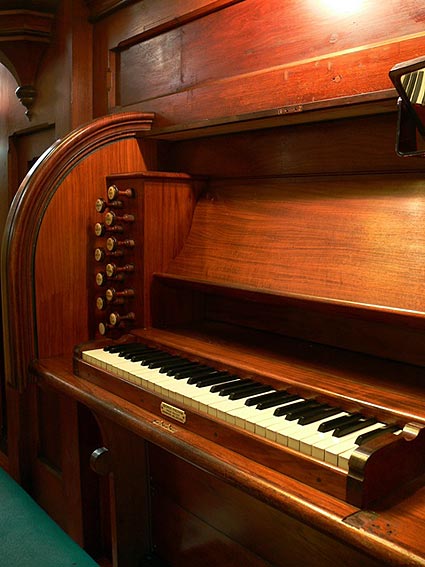
Console of the 1891 Fincham & Hobday organ,
showing preparation for the second manual
[Photograph by John Maidment (2006)]
In 1975, George Fincham & Sons carried out a renovation that included the replacement of the pedal action in metal and installation of a single-rise reservoir. In 2006 the organ was given to St Fidelis' Church by the trustees of the North Essendon church, which has closed. The organ was refurbished by Australian Pipe Organs Pty Ltd at the time of its installation. New side panelling, based upon Fincham models, was made for the casework, the slider chest was overhauled, and the console refurbished and cleared of electrical fittings.
The instrument is of some significance as the second largest example of a single manual organ built by the firm before 1900, with a generous range of flute and diapason colours. It has been installed at St Fidelis' with the assistance of an OHTA tax-deductible restoration appeal. Here it sounds well in a spacious and reverberant church.
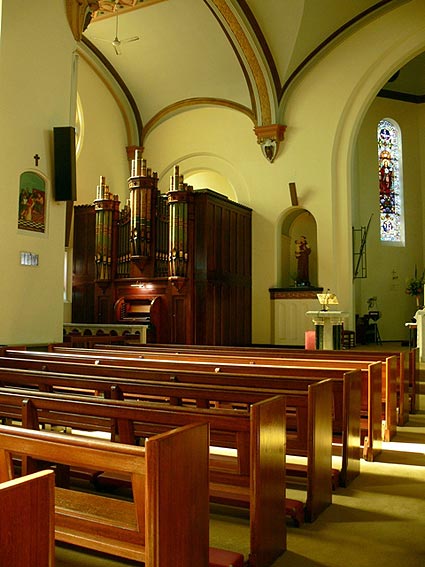
[Photograph by John Maidment (2006)]
| MANUAL Double Diapason Open Diapason Claribel Dulciana Angelica Principal Clear Flute Fifteenth Cornopean Oboe Swell to Pedal PEDAL Bourdon |
16 8 8 8 8 4 4 2 8 8 16 |
TC gvd bass TC prepared for |
Compass: 56/30
Mechanical key and stop action
3 composition pedals
Lever swell pedal
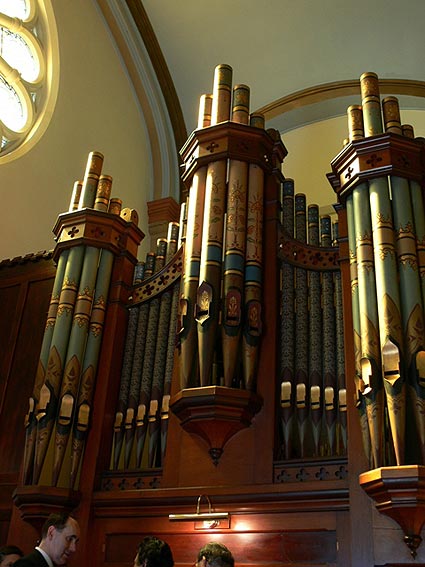
[Photograph by John Maidment (2006)]
1 First published in OHTA News, vol. 31, no. 1 (January 2007), p. 7.
2 The Advocate (4 November 1937), p. 22; Ibid (2 December 1937), p. 13.
3 The Advocate (13 October 1938), p. 4; Ibid (27 October 1938), p. 5; The Age (15 October 1938), p. 24.
4 George Fincham Letters, 14/252, 18/779; George Fincham Papers (list); cited in E.N. Matthews, Colonial Organs and Organbuilders (Carlton: Melbourne University Press, 1969), pp. 131, 249.